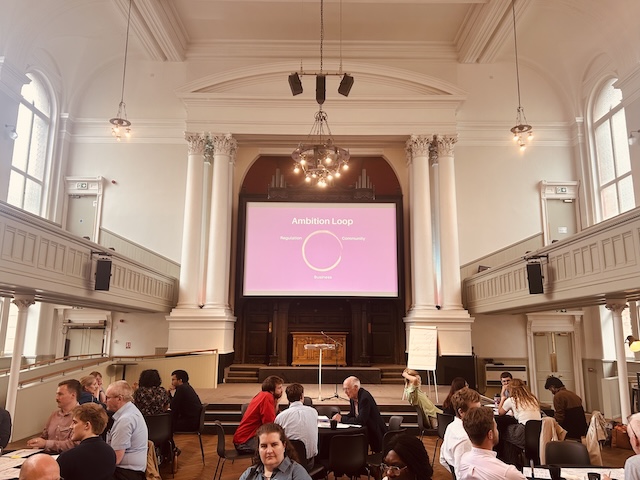This week I was invited to run an afternoon session for the Engineers Without Borders UK Systems Change Lab at their event in Glasgow. This event is part of their wider programme to create system change in engineering education to build globally responsible engineering.
My brief was to prompt some creative thinking as part of the ‘develop’ phase in their programme. The session was an opportunity to pair two tools that I have previously used separately in our facilitation at Constructivist: the Kalideascope and the Ambition Loop.
For years I’ve been developing and refining the Kalideascope as a structured model for divergent thinking. It helps users move beyond one initial idea by gathering a wide range of inputs, capturing questions and creating the conditions for new connections to emerge.
While the Kalideascope generates lots of ideas, we need a different tool for the convergent thinking that enables us to choose between ideas and improve on them. So here I brought in the Ambition Loop — a tool that Bill Sharpe introduced us to in the Regenerative Design Lab to help identify what ideas have the potential to create systems change. The Ambition Loop model helps us by going beyond testing our ideas against the brief to testing how ideas can be taken up by and amplified within a systems.
This pairing of the Kalideascope with the Ambition Loop created a strong arc for the session. The first tool expands the fields of possibilities. The second homes in on the ideas that the system might take up.
I am seeing that with the Ambition Loop model that it tends to draw out questions about who we need to partner with to make change.
If you have a copy of the Pattern Book for Regenerative Design, I suggest, like me, you annotate the end of the Kalideascope entry to say that it works well paired with the Ambition Loop motif as a divergent-convergent pair.

